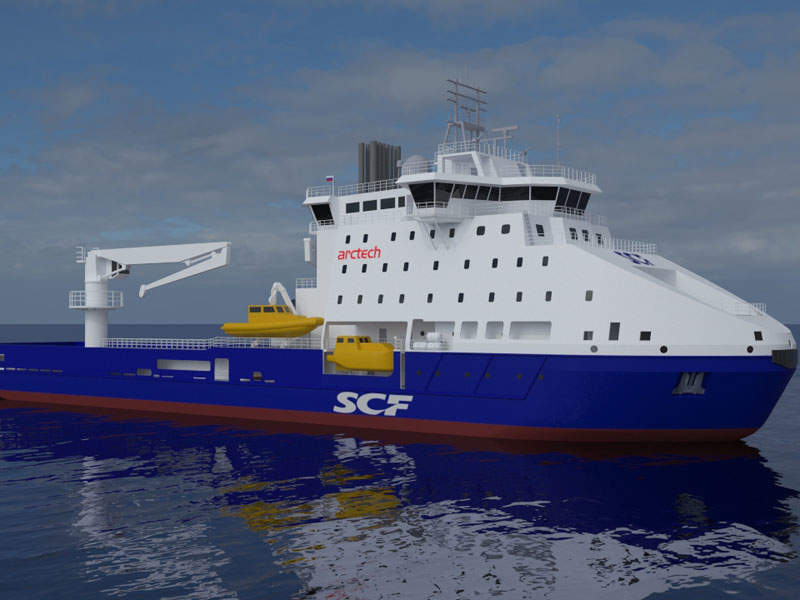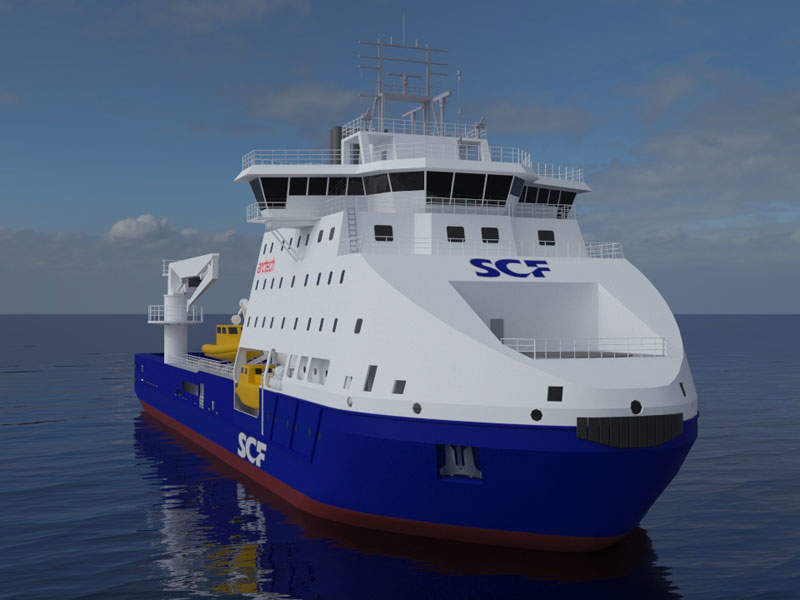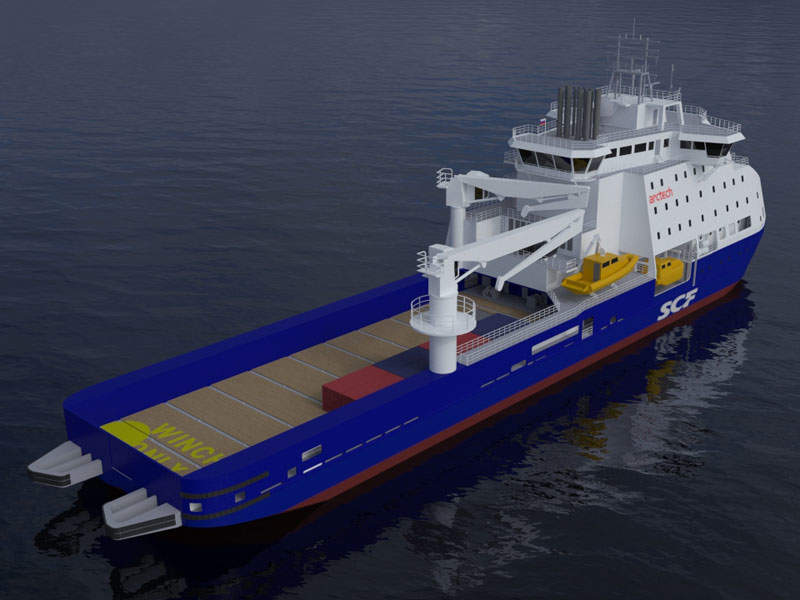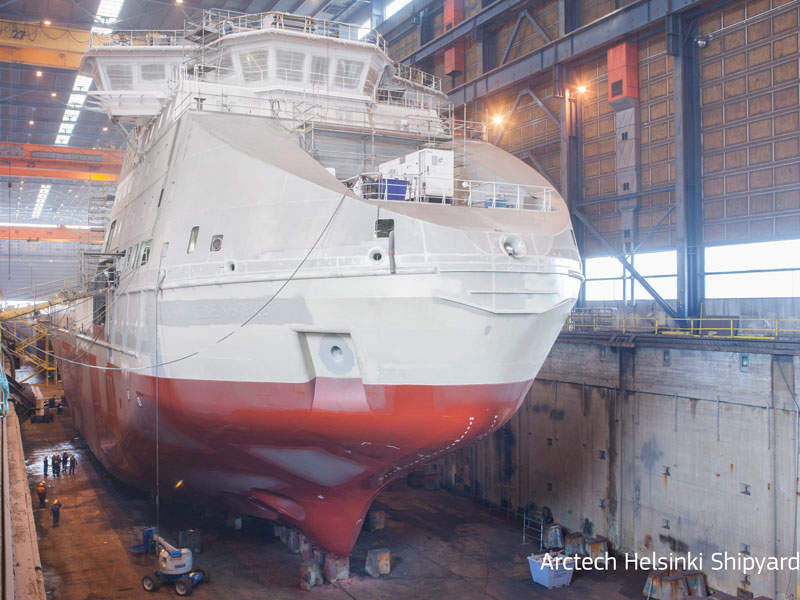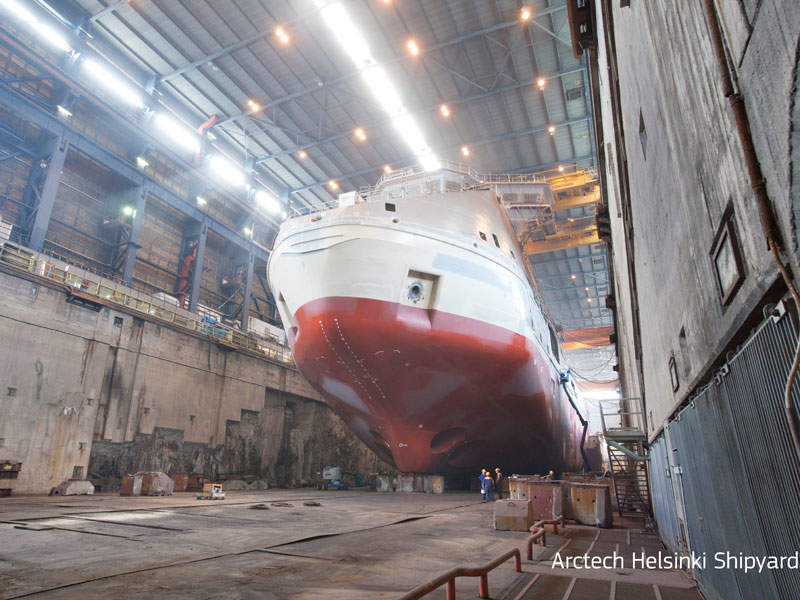The NB 511 icebreaking supply vessels was built by Arctech Helsinki Shipyard under a €100m ($113m) contract from Russian shipping company Sovcomflot.
The new vessel is part of a series of four icebreaking supply and stand-by vessels (NB 511-514) developed by Arctech for Sovcomflot. Arctech was responsible for the design, construction, testing and commissioning of the vessels.
The NB 511 vessel, named Gennadiy Nevelskoy, was delivered in March 2017.
The remaining three vessels were named Stepan Makarov, Fedor Ushakov and Evgeny Primakov, and were delivered in July 2017, October, 2017 and February 2018 respectively.
The NB 511 is used by Sakhalin Energy Investment Company as a platform supply vessel for its oil and gas fields in the Sakhalin-2 region. It transports supplies and personnel between land bases and production sites in the adverse conditions of the Sea of Okhotsk. The vessel can load and transport cargo on deck and in integrated tanks under the deck during all seasons.
NB 511 icebreaking supply vessel design and features
NB 511 is an advanced version of Arctech’s two other icebreaking supply vessels, Vitus Bering (NB 506) and Aleksey Chirikov (NB 507), which were delivered in 2012 and 2013 respectively. The new vessel has a length of 100m, breadth of 21m, displacement of 3,000t, and a speed of 16k.
The hull of the vessel is designed for stern-first navigation in ice cold conditions and has a very high icebreaking capability. The vessel is capable of navigating independently through 1.7m of thick, drifting ice in temperatures as low as -35°C.
NB 511 features emergency evacuation, rescue and fire-fighting capacity. It is capable of performing oil spill response and platform support activities. The vessel can also operate as a diving support vessel and features a moon pool.
The icebreaker is highly energy-efficient and includes number of environment-friendly features. It is designed to meet the international IMO Tier III emission standards and generates minimal sulphur oxides emissions due to the use of low sulphur fuel oil. In addition, environmentally hazardous liquids are separated from the vessel’s hull to improve safety.
Equipment and systems
The NB 511 features a high-dynamic positioning system, which enables the vessel to redundantly maintain its position and heading. It is fitted with a tank level remote sounding system (TSS/BMS4) supplied by API Marine. TSS/BMS4 is an electro-pneumatic system that can be used for draught and ballast level measurement.
The vessel is also equipped with state-of-the-art Nordic environmental solutions, including a catalytic converter exhaust system. It is fitted with systems to limit underwater noise levels, and an offshore crane with active heave compensation.
Construction of the icebreaking supply vessel
The NB 511 was launched with a steel-cutting ceremony at the Vyborg Shipyard in November 2014. Construction of the vessel’s hull began in December 2015 with the first block of the vessel, weighing 221t, being placed in the building dock.
Accommodation facilities aboard NB 511
The vessel offers accommodation for 70 people, including 28 crew and 42 specialised staff. It can also accommodate 150 evacuees.
NB 511 engine and propulsion details
The NB 511 is fitted with six main diesel generator sets generating a total power of approximately 21,000kW. The propulsion power of the vessel is 13,000kW.

